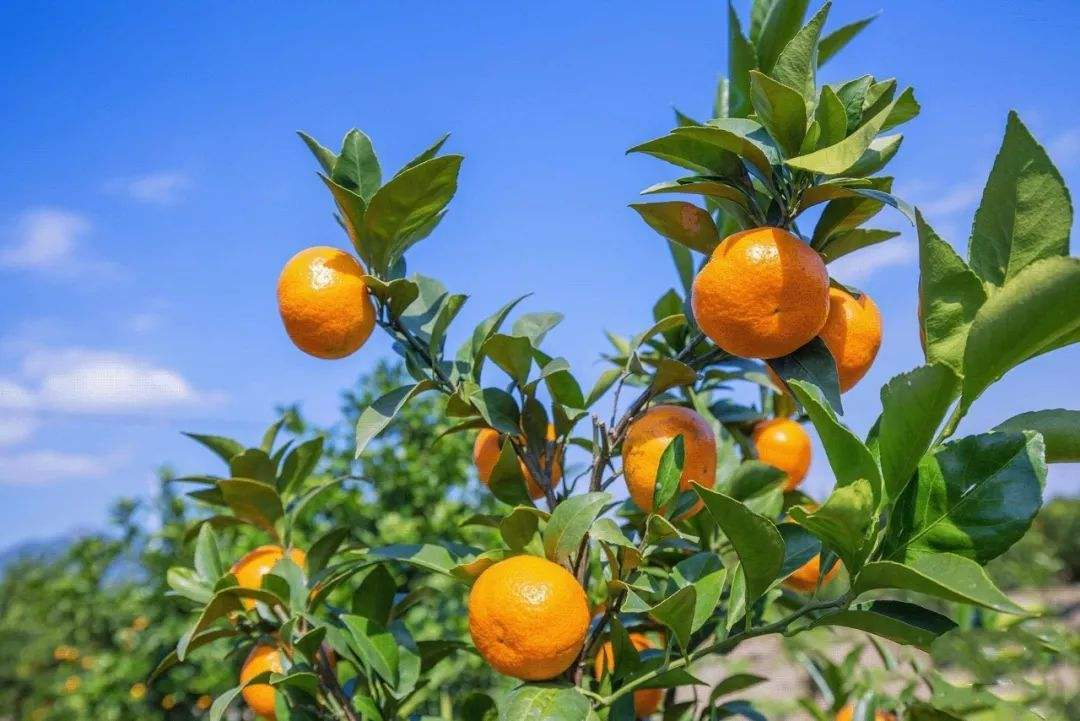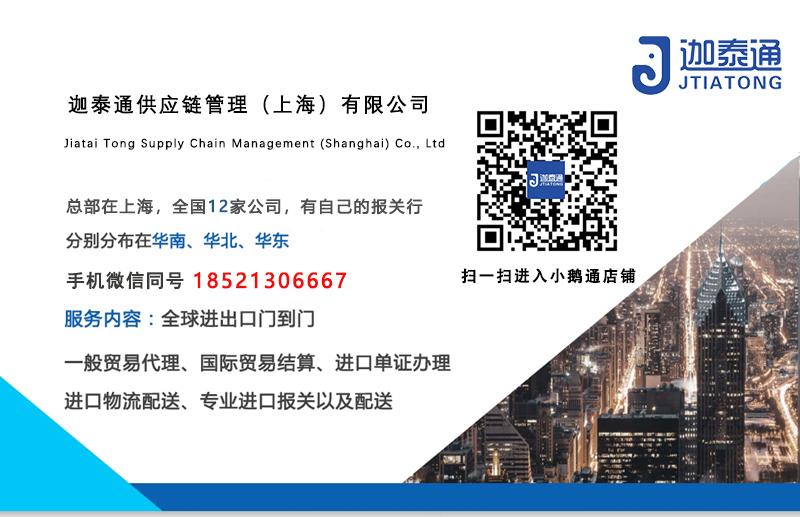【 Customs knowledge 】 Quarantine requirements for importe
Quarantine requirements for imported citrus plants from Laos
On December 27, 2021, the General Administration of Customs issued Announcement No. 117 of 2021: Starting from the date of this announcement, Laos citrus imports that meet relevant requirements are allowed.
Quarantine requirements for imported citrus plants from Laos
1、 Inspection and quarantine basis
(1) The Entry and Exit Animal and Plant Quarantine Law of the People's Republic of China and the Implementation Regulations of the Entry and Exit Animal and Plant Quarantine Law of the People's Republic of China;
(2) The Food Safety Law of the People's Republic of China and the Implementation Regulations of the Food Safety Law of the People's Republic of China;
(3) Measures for the Supervision and Administration of Inspection and Quarantine of Imported Fruits;
(4) Protocol between the General Administration of Customs of the People's Republic of China and the Ministry of Agriculture and Forestry of the Lao People's Democratic Republic on the Requirements for Plant Quarantine of Citrus Fruits Imported from Laos to China.
2、 Product names allowed for entry
Citrus fruits (hereinafter referred to as "citrus") include oranges (scientific name Citrus reticulata, English name Mandarin), pomelos (scientific name Citrus maxima, English name Pomelo), and lemons (scientific name Citrus lemon, English name Lemon).
3、 Permissible origin
Laos citrus producing area.
4、 Approved orchards, packaging factories
Citrus orchards, packaging factories, and cold treatment facilities exported to China must be registered with the Ministry of Agriculture and Forestry of the Lao People's Democratic Republic (hereinafter referred to as "MAF") and approved by the General Administration of Customs of the People's Republic of China (hereinafter referred to as "GACC"). The registration information includes name, address, and registration number, in order to accurately trace the origin of exported goods that do not meet the relevant provisions of this quarantine requirement. The registration list should be provided by MAF to GACC before the export season each year, and GACC will publish the registration list on its official website.
5、 Quarantine pests of concern to China
1. Aleurodicus dispersus, a spiral whitefly
2. Bactrocera correcta, a pomegranate fruit fly
3. Bactrocera zonata
4. Planococcus lilacinus
5. Planococcus minor
6. Pyroderces rileyi
7. Eutetranychus africanus
8. Candidatus liberibacter asiaticus
9. Xanthomonas axonopodis pv Citri
6、 Pre export requirements
(1) Orchard management.
1. All citrus orchards exported to China should focus on monitoring and comprehensive management of quarantine pests of concern to the Chinese side.
2. Orchards exported to China should implement Good Agricultural Practice (GAP), including maintaining orchard hygiene conditions, timely cleaning of fallen fruits, and implementing Integrated Pest Management (IPM), such as physical control, chemical control, and biological control.
3. MAF should supervise and guide export orchards to carry out pest monitoring and comprehensive management, and conduct pest monitoring throughout the year; In addition to visual inspection, various physical or chemical methods should also be used to trap and monitor harmful organisms, such as hanging fruit fly pheromone traps in orchards and using yellow sticky insect plates for physical monitoring.
Once quarantine pests of concern to the Chinese side are detected, comprehensive measures such as chemical or physical prevention and control should be taken immediately. The prevention and control records should include information such as the names of chemical agents used during the growing season, effective ingredients, dosage and time of use. MAF needs to maintain pest monitoring and control records, which should be provided upon request by GACC.
5. Pomelo must be bagged during the growth cycle. Please refer to Attachment 1 for specific technical specifications.
6. Before exporting oranges and lemons to China, they must undergo cold treatment at a registered cold treatment facility. Please refer to Attachment 2 for specific operating procedures.
The cold treatment index of oranges is: continuous treatment at 1.67 ° C or below for 18 days;
The cold treatment index of lemon is: continuous treatment at 3 ° C or below for 18 days.
(2) Packaging factory management.
1. The processing and packaging of citrus fruits exported to China should be carried out under the supervision of MAF.
2. The processing process should be manually selected and cleaned, and post harvest fungicides can also be used to remove diseased fruits, insect fruits, rotten fruits, deformed fruits, branches and leaves, or other plant residues, in order to effectively remove insect eggs, pathogenic spores, scale insects, mites, whiteflies, etc. attached to the surface of the fruits, and ensure that citrus fruits imported to China do not carry harmful organisms or other impurities of concern to the Chinese side.
(3) Packaging requirements.
1. The packaging materials should be clean, hygienic, unused, and comply with relevant Chinese plant quarantine requirements.
2. The packaging box should be marked in English with "Exported to the People's Republic of China", the name of the fruit, place of origin (province, district), orchard name or its registration number, packaging factory name or its registration number.
3. Products to be exported after packaging should be stored separately to prevent re infection of harmful organisms.
4. If wooden packaging is used, it must comply with the requirements of International Plant Quarantine Measures Standard No. 15 (ISPM15).
(4) Pre export quarantine.
Within 2 years after the effective date of this announcement, MAF is required to conduct sampling inspections on each batch of citrus imported to China at a rate of 2%. If no quarantine issues are found, the sampling ratio will be reduced to 1% thereafter. Among them, 30 fruits from each batch of sampled samples and suspicious fruits found during the inspection process must be dissected for inspection.
If quarantine pests of concern to the Chinese side are found, the batch of goods shall not be exported to China, and the export qualifications of relevant orchards and packaging factories for this season shall be suspended.
(5) Plant quarantine certificate requirements.

(5) Plant quarantine certificate requirements.
After passing the quarantine inspection, MAF shall issue a plant quarantine certificate, indicating the registration number of the orchard and packaging factory, and in the additional declaration column, it shall be noted: "This confirmation of citrus fruits companies with the Protocol on Phytosanitary Requirements for Export of Fresh Citrus Fruits from Lao PDR to China, and is free from any quarantine pests of concern to China ”(This batch of citrus meets the protocol requirements for plant quarantine of fresh citrus imported from Laos to China, and does not contain quarantine pests of concern to China.)
The plant quarantine certificate for oranges and lemons must indicate the cold treatment status, including treatment temperature, duration, and cold treatment facility registration number.
7、 Entry inspection and quarantine and handling of non conformities
When citrus fruits arrive at the port of entry in China, Chinese customs shall carry out quarantine in accordance with the following requirements.
(1) Verification of certificates and identification.
1. Verify whether the imported citrus has obtained the "Entry Animal and Plant Quarantine License".
2. Check whether the markings on the packaging box comply with the provisions of Article 6 (3).
3. Check whether the plant quarantine certificate complies with the provisions of Article 6 (5).
(2) Entry inspection and quarantine.
1. Citrus exported to China should be imported from ports allowed by the Chinese side to import fruits.
2. According to relevant laws, administrative regulations, rules, and other regulations, imported citrus fruits shall be inspected and quarantined. Those who pass the inspection and quarantine shall be allowed to enter the country.
(3) Handling of non-compliance with requirements.
1. If it is found to come from unregistered orchards, packaging factories, or cold treatment facilities, the batch of citrus is not allowed to enter the country.
If the cold treatment is deemed invalid, the batch of goods will undergo cold treatment at the port of entry (if it is confirmed that the refrigerated container is used, the cold treatment can be carried out inside this container). Otherwise, the batch of goods will be returned or destroyed.
3. If quarantine harmful organisms of concern to the Chinese side are intercepted, the batch of goods shall be returned, destroyed, or subjected to effective quarantine and disinfection treatment. GACC will immediately notify MAF of the specific types of harmful organisms, relevant plant inspection certificate numbers, registration numbers of orchards and packaging factories, container numbers, and other information, and suspend the import of citrus from relevant orchards and/or packaging factories as appropriate. MAF should investigate the reasons and urge relevant enterprises to rectify until they meet GACC requirements again.
8、 Retrospective review
Based on the dynamics of the citrus epidemic in Laos and port interception, GACC will conduct further risk assessments and negotiate with MAF to adjust the list of quarantine pests or corresponding quarantine risk control measures in a timely manner. To ensure the effective implementation of management measures and operational requirements, both parties may conduct a comprehensive review and evaluation of the implementation of the protocol in accordance with relevant procedures and regulations.

Attachment 1: Technical specifications for pomelo bagging
1、 Scope
This specification is applicable to the bagging management of grapefruit (Citrus maxima).
2、 Bagging technology
(1) Bag selection.
The fruit bags selected for use in this protocol should be special paper bags with good wind resistance, waterproof, and breathability, which can prevent the invasion of bacteria and pests.
(2) Bagging time.
The bagging time should be in the later stage of fruit expansion. Different regions should make appropriate adjustments based on factors such as climate and altitude, but the bagging time should be at least 60 days.
(3) Bagging method and precautions.
Open the opening of the bag to support the bottom of the bag, so that the vent hole opens and the bag body swells, and the fruit hangs in the bag, tying the bag tightly. When bagging, pay attention to three points: first, single fruit bagging or multi fruit bagging as a backup option; Secondly, the bag opening must be tightly tied; Thirdly, the vent hole must be opened.
(4) Management before bagging.
Determine a reasonable fruit load based on different tree vigor and body conditions, eliminate small fruits, deformed fruits, diseased and insect infested fruits, and overly dense fruits, striving to achieve uniform distribution of bagged fruits and basically the same size.
Take appropriate prevention and control measures before bagging based on the occurrence cycle of pests and diseases in the field. If necessary, spray pesticides according to pesticide usage standards for prevention and control.
(5) Management after bagging.
1. Check the integrity of the paper bag
Before harvesting, inspect the fruit bags. If there is any damage, it cannot be entered into the workshop or factory for processing and transporting citrus to China.
2. Plant quarantine measures
Based on the growth of grapefruit, reasonable measures such as thinning branches and picking leaves should be taken to improve the ventilation and light transmission conditions of the tree and reduce the occurrence of diseases and pests. Reasonably use pesticides, promote physical and biological control technologies, and reduce the occurrence of diseases and pests.
3. Grapefruit Harvesting
To prevent the re infection of harmful organisms such as fruit flies, grapefruit should be harvested together with the set of bags, promptly sent to the packaging factory, unpacked as required, and defective fruits should be removed.
Attachment 2: Operating Procedures for Cold Treatment before Export
1、 Cold treatment facilities
1. Pre shipment cold treatment can only be carried out in cold treatment facilities approved by MAF and GACC.
2. MAF officials are responsible for ensuring that the cold treatment facilities used by exporters meet appropriate standards and have refrigeration equipment that can achieve and maintain the required temperature of the fruit.
3. MAF officials will retain the registration of facilities approved for pre shipment processing of citrus fruits exported to China, which includes documents explaining the following:
(1) The location and construction plan of all facilities, including detailed contact information of the owner/operator;
(2) The size and capacity of the facility;
(3) The type of insulation for walls, ceilings, and floors;
(4) The brand, style, type, and capacity of the refrigeration compressor and evaporator/air circulation system;
(5) The temperature range of the equipment, defrosting cycle control, and specifications and detailed information of any integrated temperature recording equipment.
Before the start of each citrus export season, MAF is required to submit the name and address of the currently registered cold treatment facility to GACC.
2、 Type of recorder
MAF officials ensure the combination of temperature probes and temperature recorders:
1. The probe should be between -3.0 ° C and+3.0 ° C, accurate to ± 0.15 ° C.
2. Capable of accommodating the required number of probes.
3. Be able to record and store data from the processing process until the
笔记
本文来源:http://www.jtia56.cn/list_68/381.html
本文标题:【 Customs knowledge 】 Quarantine requirements for importe
注:本文部分图文来源于网络,如有侵权联系我们删除,谢谢!
【 Customs Knowledge 】 Inspection and Quarantine Requireme Customs knowledge: What should be paid attention to when imp
迦泰通(海关AEO高级认证企业)-服务范围
迦泰通19年进出口通关经验,10+分公司,支持全国进口申报;是海关AEO高级认证企业,专注全球门到门,一站式进口代理清关服务!我司业务范围:国际运输、进口报关清关、仓储配送、代签外贸合同与付汇、暂时进出口等。全国免费咨询电话tel:18521306667
【相关推荐】
- 了解详情 > How much do you know about sports nutrition food?
- 了解详情 > Customs knowledge: Chinese medicinal materials that are haza
- 了解详情 > Customs Knowledge: New Regulations on the Import of Special
- 了解详情 > [Customs Knowledge] How much do you know about infant formul
- 了解详情 > 【 Customs Knowledge 】 Import of baking raw materials such
- 了解详情 > 【 Customs Knowledge 】 Inspection and Quarantine Requireme






